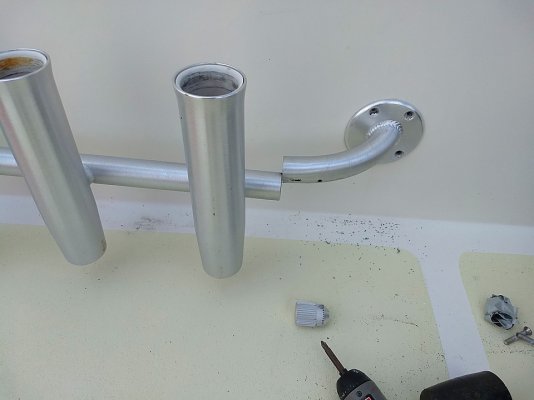menzies
Guru
See photo.
We have a rod holder (and mop etc) on the boat deck. I noticed that it had separated and when I checked it there is a serrated bullet that holds the two pieces together. It had gone onto one side and the pieces came apart.
The only way to get the bullet back into place was to remove one end, silicon it to the holder part so it wouldn't move again, and replace the end.
I got the four bolts off which were well sealed in. But the fitting will not come off. I gave it a few hefty bangs with a rubber mallet with not an ounce of movement. It is well put on there, probably with 5200 or similar.
So choices. Get a screwdriver of other tool in behind the fitting and pry it off. pretty sure it will damage the fiberglass and make a mess. Or, and this is where I am leaning, simply put a broad hose clamp between the pieces. Downside is it will look unsightly.
So before I go any further, any one have other ideas?
We have a rod holder (and mop etc) on the boat deck. I noticed that it had separated and when I checked it there is a serrated bullet that holds the two pieces together. It had gone onto one side and the pieces came apart.
The only way to get the bullet back into place was to remove one end, silicon it to the holder part so it wouldn't move again, and replace the end.
I got the four bolts off which were well sealed in. But the fitting will not come off. I gave it a few hefty bangs with a rubber mallet with not an ounce of movement. It is well put on there, probably with 5200 or similar.
So choices. Get a screwdriver of other tool in behind the fitting and pry it off. pretty sure it will damage the fiberglass and make a mess. Or, and this is where I am leaning, simply put a broad hose clamp between the pieces. Downside is it will look unsightly.
So before I go any further, any one have other ideas?


